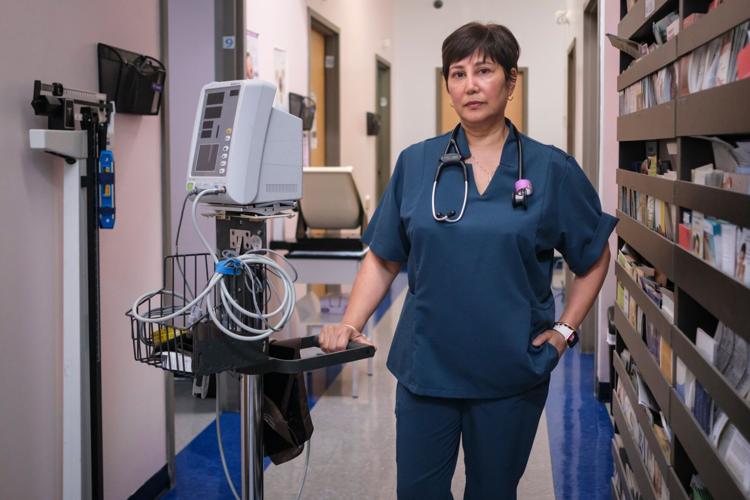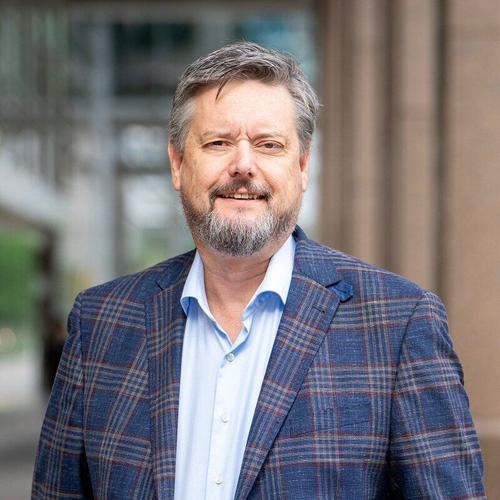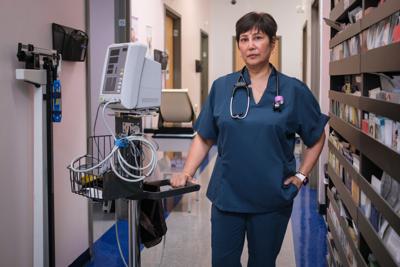Holding a patientâs new baby. Catching a cancer early enough that it can be treated. Helping a longtime patient ease into healthy old age. Family doctors say these are the moments that bring them joy.
But in recent years, the job of doing family medicine has become harder in Ontario. The costs of running a practice have escalated, patients’ medical needs are higher and a sharp rise in administrative tasks is leading to burnout. Joyful moments are now eclipsed by a long list of challenges, and it’s pushing an increasing number of doctors away from providing comprehensive family medicine.Â
With roughly two million Ontarians lacking a family doctor, health-care leaders and medical organizations have been pushing for the province to take action.Â
Last year, the Ford government acknowledged the crisis and pledged to connect every Ontarian to a family doctor or primary care team by 2029. The $2.1 billion Primary Care Action Plan will create and expand hundreds of new family health teams, enhance digital tools for doctors and patients and boost the workforce by opening new medical schools and teaching clinics to train more family physicians.
But for many family doctors, help remains a long way off. The Star spoke with three about their biggest pain points, solutions that would make their job easier and why, despite the challenges, they are sticking with the profession.
Dr. David Barber

Dr. David Barber, family physician in Kingston and chair of the Ontario Medical Association’s Section on General and Family Practice.
SuppliedA family doctor in Kingston, Barber works within an academic setting, helping to train the next generation of family physicians. With 700 patients on his roster, Barber sees patients three days a week â the part he enjoys most. Barber is also the chair of the Ontario Medical Association’s Section on General and Family Practice, which represents about 15,000 family doctors.Â
Financial pain point
For most family doctors, the amount they get paid by the government hasnât kept pace with the rising costs of running their business, especially as inflation has soared. Rents have gone up. Salaries for office staff, including nurses and receptionists, have climbed. Electronic medical records have become a growing expense.
Other professions can account for those pressures by raising prices or fees, Barber said. âDoctors donât have that liberty because the government controls our revenue,â he said, adding the mounting stress of running a family medical practice is one reason new physicians are turning away from the profession.
âThey know they have other options â they donât have to do cradle-to-grave care,â he said, noting doctors who train in family medicine can work as emergency physicians, or do a focused practice, including in sports medicine or mental health. âIf they work as a hospitalist, for example, they essentially get a salary. All the worries that a family doctor has running a practice are gone.â
Administrative pain point
In the last 15 years, digital technology has made life worse for family doctors, said Barber. The email inbox has become a âkiller.” With every patient generating a paperwork trail, almost all of which funnels into the inbox, doctors are overwhelmed.
The daily inbox now includes: results from blood work, diagnostic imaging and other medical tests. Prescription renewals. Responses from medical specialists either accepting or denying a referral. Notes, test results and clinical summaries of patients getting hospital care. For many of these tasks, doctors receive no compensation.
âMy own family doctor, he wakes up at four in the morning to start on the paperwork,â Barber said. Another physician he knows stopped going camping in Algonquin Park because, without cell service, she could not keep up with patientsâ paperwork.
âFamily docs refer to (paperwork) as their second job, or their night or weekend job.â
The Ford government and OMA are finalizing an agreement for doctors working in a family health
A solution
Barber has led the OMA committee pushing for better compensation for family doctors. Though still in arbitration, an updated payment structure is likely coming in 2026 for the roughly 6,500 doctors who work in a family health organization. Called FHO+, the proposed deal recognizes the behind-the-scenes work of family doctors and will compensate them for clinical administration, such as charting and filling out forms. Â
âItâs a model that we hope will encourage more doctors to go into providing this critical cradle-to-grave care,â Barber said.
Why he is sticking with family medicine
âItâs where we can have the biggest impact. Keeping people healthy, keeping them out of hospital, doing a lot of preventative care, catching diseases early so something can be done about them ⦠Itâs nice making a positive difference in somebodyâs life.â
Dr. Rosemarie Lall

 Dr. Rosemarie Lall.
Giovanni Capriotti for the ÎÚÑ»´«Ã½ StarA family physician for more than 30 years, Lall works in a family health organization in Scarborough that cares for roughly 10,000 patients. Lallâs own roster of patients is more than 1,500 and is considered on the larger side for a family doctor, which she said is typical for an older physician. âData shows when an older doctor like me retires, you need three new doctors to replace us.”
In a family health organization, doctors are paid through capitation. This means doctors receive payment from the government determined by the number and complexity of patients on their roster. In this model, doctors can also bill OHIP for some services. Lall said she typically grosses $6 for every patient she sees on top of her baseline payment.Â
Financial pain point
The rising cost of running a practice is most pressing for Lall. She and the other doctors in the family health organization pay a portion of their earnings to support the practice.Â
Expenses include everything from snow removal ($2,000 a month, from November to March; though Lall has bought a plow to save money) to office and medical supplies, such as toilet paper, paper clips and cleaning products ($700-$800 a month). Â
The family health organization has 16 full- and part-time staff, whose salaries cost the practice roughly $35,000 a month. The computers, software and program support needed to run the organizationâs electronic medical records for their patients costs almost $1,600 a month (including $320 for the software that handles the faxes electronically).
At the height of the COVID-19 pandemic, when costs rose without a corresponding increase in revenue from the government, Lall said she had to put $20,000 of her own money into the practice to keep it afloat. Â
Administrative pain point
âThe increasing medicalization of forms that require a physician evaluation and sign-off is taking time away from patient care,â said Lall, adding that filling out forms consumes an ever greater part of her to-do list. âLet me practise what Iâm trained for. I didnât go into medicine to do paperwork.â
Searching for patients’ medical records also takes up a large chunk of Lall’s time. If one of her patients goes to a Muskoka hospital for care, for example, she doesn’t automatically receive notes or results. âMy system doesn’t talk to that hospital’s system; we’ve got to track it down,â she said, noting this means logging on to other platforms for information. âIf you do five extra clicks to get information on a patient, for 25 to 35 patients a day, thatâs a lot of extra time from my day.â
A solution
Writing notes following a patientâs exam was among Lallâs most time-consuming tasks, seeping into evenings and weekends. Since June 2023, Lall has been using an AI scribe to summarize her patient visits, which she reviews and edits to ensure accuracy.
âItâs been life-changing,â said Lall, an early adopter of the technology. Though she pays $135 a month for the tool, Lall said it’s worth it. âIt has decreased my charting time to a fraction of what it used to be. On really good days, Iâm done my notes by the end of my workday.â
Why she is sticking with family medicine
Even after three decades, Lall enjoys the daily challenge of solving patientsâ health problems. Hearing a patient say âThank you for being my doctor; thank you for being there for meâ remains the best part of her job. âYouâre not just a heart, youâre not just a big toe or your blood sugar result. People appreciate that whole-person care.â
Dr. Madura Sundareswaran

Dr. Madura Sundareswaran, a family doctor in Peterborough.
SuppliedIn practice for six years, Sundareswaran works in a family health organization in Peterborough, where she provides comprehensive primary care to 760 rostered patients. She is also the founder of the Peterborough Newcomer Health Clinic, a pilot project that helps newcomers and refugees transition to the Canadian health-care system. In this role, Sundareswaran looks after 50 to 100 patients who donât have immediate access to primary care.
Financial pain point
Like most family doctors, Sundareswaran points to the rising cost of overhead without the proportional rise in wages. She said family doctors under most payment models, including family health organizations and fee-for-service, effectively subsidize 30 per cent of a patient visit â a cost not often factored in payment from the government.
âEncompassed within that single visit is the overhead cost of the day-to-day operations: the staff, the rent, the supplies â everything from the pen that we use to the crinkly paper on the bed,â Sundareswaran said.
She wants people to understand that doctors even incur costs of medical supplies, whether thatâs purchasing the plastic speculum required for cervical cancer screening, or buying the syringes and needles for vaccines. âEven the fridge to properly store vaccines, we need to buy and maintain it.â
Rather than forcing doctors to find efficiencies or cut overhead costs, the focus needs to be on increasing compensation for family physicians who provide comprehensive care, Sundareswaran said. To back up her point, she said data cited by the College of Family Physicians of Canada shows that family doctors provide about half of all medical services in the country, but account for just 5.7 per cent of total national health spending.Â
âThat has to be factored in when weâre trying to recruit doctors to do longitudinal, comprehensive family medicine,â she said. âWeâre up against jobs in hospitals or emergency departments, where there is no overhead. Our pay has to reflect that difference.â
Administrative pain point
Sundareswaran is working with colleagues in Peterborough on a project thatâs asking local family doctors to pinpoint specific tasks leading to administrative burden and burnout. One that keeps popping up, she said, are those that âneedlessly increase our cognitive load and strain.â
A patientâs discharge summary from hospital is one such task. While critical for a family doctor to review, Sundareswaran said reports are now dozens of pages long, often with inconsistent formatting, making it both time-consuming and difficult to identify the patientâs plan.
âIt used to be that we got maybe one or two pages, and we could scroll to the bottom and easily say âYup, this is what is needed,ââ she said, noting these reports contain test results, diagnostic imaging summaries and notes from different physicians. âNow, we might get a 30-page document, and youâre filtering through it and thereâs this constant fear that youâre missing something.
âThis is a new problem. Weâre getting so many reports, and so many FYIs, and so much information ⦠weâre burying important data in thousands and thousands of documents.â
A solution
Ensuring family physicians feel their expertise, skills and leadership is respected and valued would go a long way in convincing doctors to keep providing comprehensive care to patients, Sundareswaran said.
âMy colleagues are dropping like flies; theyâre leaving practice because theyâre not feeling valued,â she said. âThere is a lot thatâs complicated to fix (in family medicine). But something that the government and the public can do is help us feel valued.â
Why she is sticking with family medicine
âThe longer Iâm in practice, the more I value the patient-physician relationship,â she said, adding that research shows patients have better health outcomes when they have a strong relationship with their doctor. âBeing an important part of peopleâs health-care experience, I really do value that.â
































To join the conversation set a first and last name in your user profile.
Sign in or register for free to join the Conversation